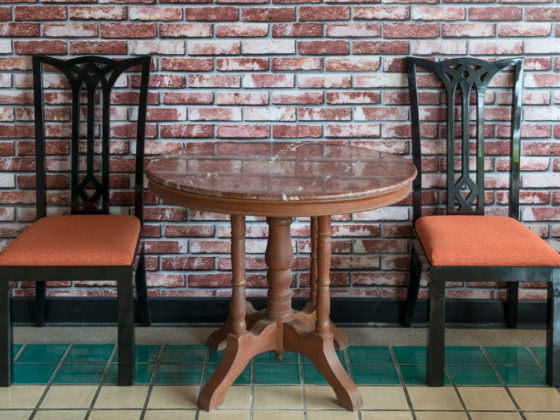
Time to put your sleuth hat on! Imagine being the Sherlock Homes of the piece before you. Beyond the factory mark itself, many clues can reveal further details about a piece. The key is always to really look at the item with specific frameworks in mind.
The first goal is to decipher if it is porcelain, stoneware or earthenware.
Earthenware
Earthenware is clay that is fired at lower temperatures so that it is hard but still has some porosity. This results in a material that allows a small amount of liquid through the material. It is often what you see in gardener’s pots!
Stoneware
Stoneware is fired at a higher temperature that results in a more watertight and tougher end product. It is named for its stone-like quality and only has decorative glazes, if any at all. Bowls, cups and plates are often products of this method.
 Above: Beautiful stoneware from Nom Living in London
Above: Beautiful stoneware from Nom Living in London
Porcelain
Porcelain is created from a refined clay which is fired at the highest of temperatures of the three. The result is a white lustrous material that can be semi-transparent in appearance on the edges or throughout depending on the thickness.
China is credited with creating porcelain and the earliest examples are dated to around 1,000 – 2,000 BC. There are three categories of porcelain: soft-paste, hard-paste, and bone china.
The main points of comparison between Earthenware, Stoneware and Porcelain will be the kiln temperature and mix of silica and additives. This results in the variation of water permeability, durability, color and texture of the material.
Marks on antique pottery can relay information on dating, pattern, place of manufacture, artist and more. Identifying the maker, and other details about a piece of pottery, is the key to unlocking its secrets.
Some factories use a letter or number series to identify manufacturing dates, but most have modified their stamps in some way over time. Learning the sequence of those changes can help you identify a timeframe for when a piece was made.
The earliest identifiable antique pottery marker is on an ancient Greek vase marked “Exekias made me.” You’re not likely to encounter one of that age, but you may run into many pottery marks. For example, porcelain is an easy material to mark and usually maintains readability.
Asia
Chinese pottery often has marks that signal the dynasty and the name of the ruling emperor. However, many reproductions and forgeries exist, so you can’t rely on the pottery mark alone. Japanese pottery is often marks with the artisan’s name. Commercially produced pottery can include all sorts of additional details too.
Europe
While European pottery makers were using some marks as early as the Renaissance, they didn’t become truly widespread until the 18th century when porcelain and other fine ceramics were more affordable and mass production became an option.
United States
Since the late 19th century pottery in the United States, including art pottery, has flourished. Popular antique pottery markers include such familiar names as Roseville, Homer Laughlin, McCoy and Van Briggle. The Marks Project (see below) is an incredible resource for American pottery.
There is an abundance of antique pottery marks out there (Noritake alone has used at least 400 different marks in the last 100 years!), It is a good idea to pick up a few books and browse some online resources provide specialty listings of backstamps for different categories of pottery.
Here are a few resources to start you in the right direction:
The Northern Clay Center Education Page
The University of Florida Museum
Find a favorite piece, and see what you can learn about it the next time you’re antiquing! For more tips and tricks, talk to the team at Gaslight Antiques.



